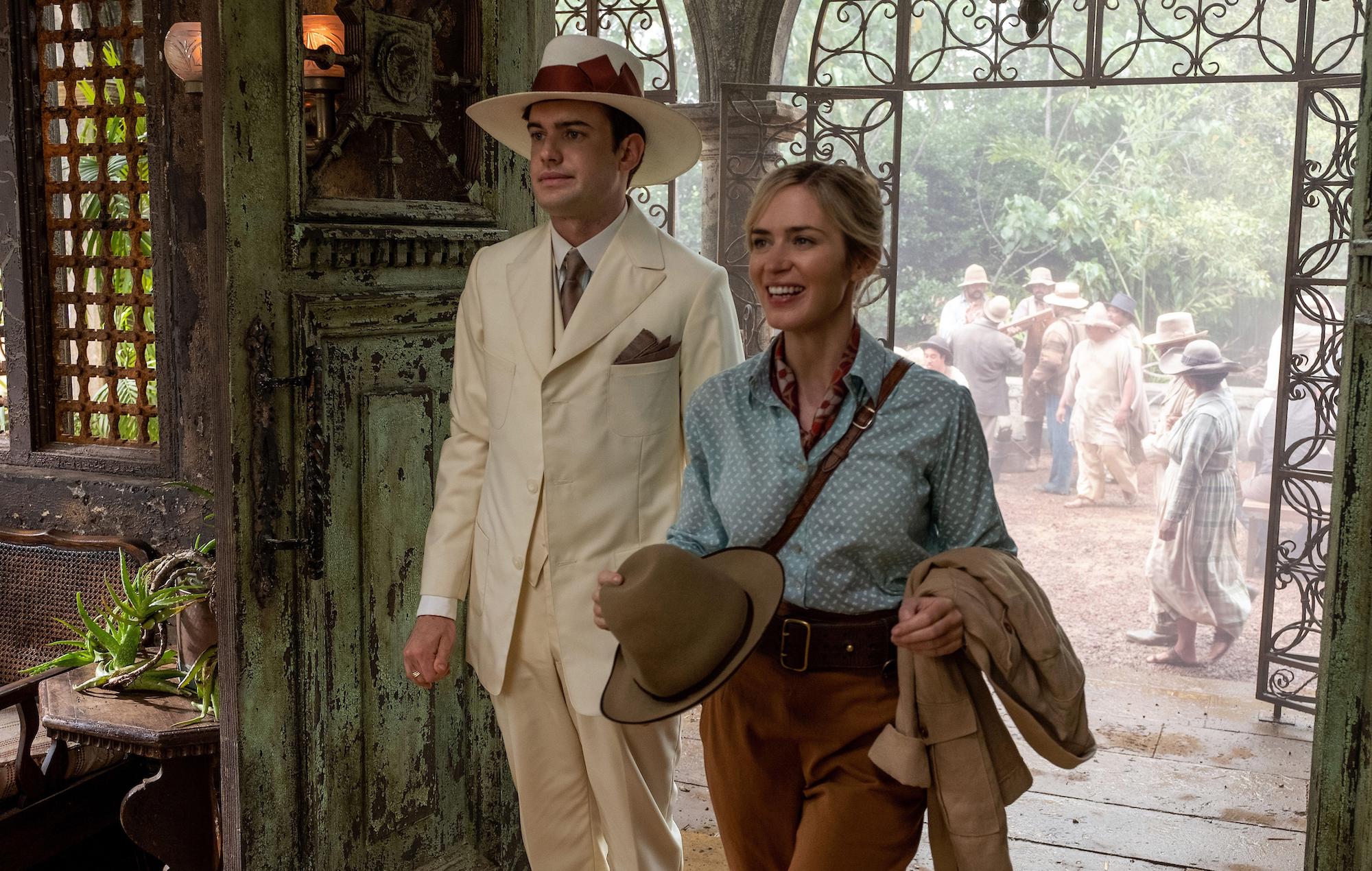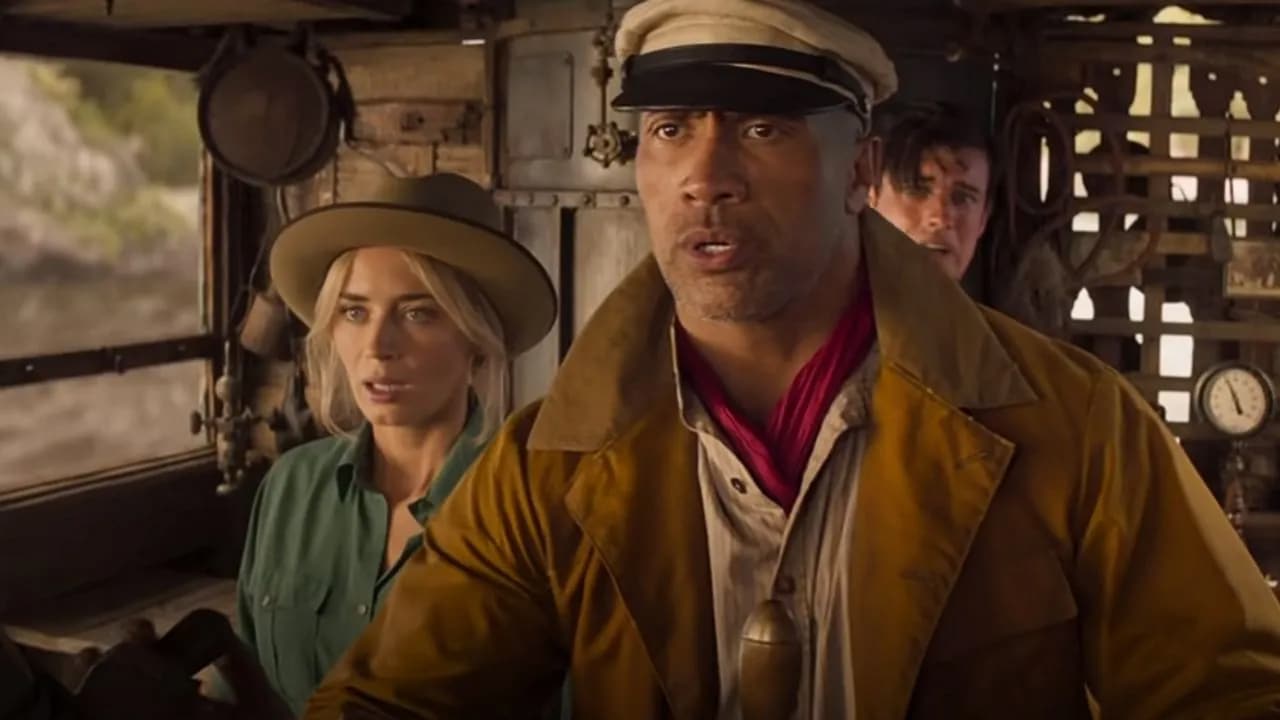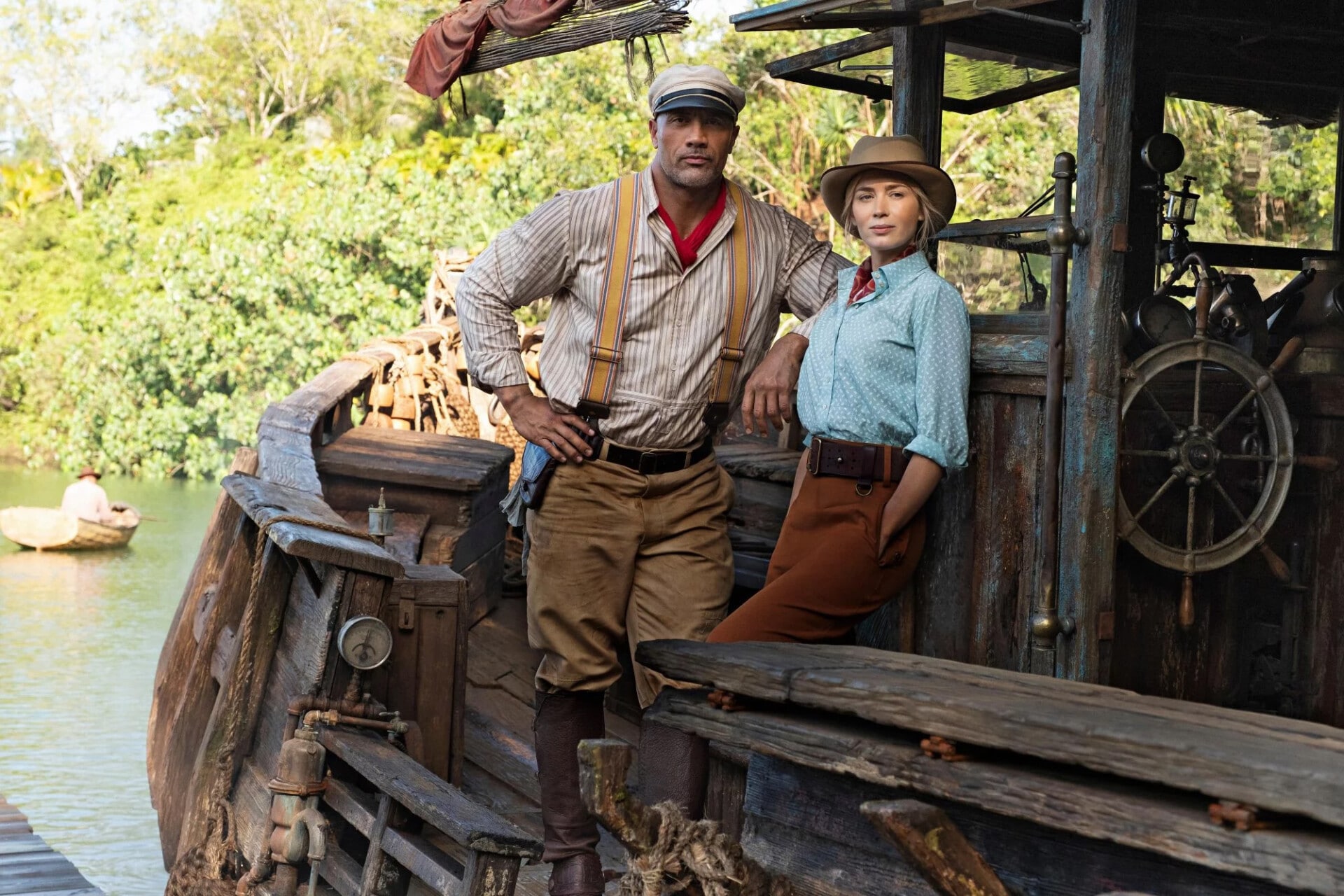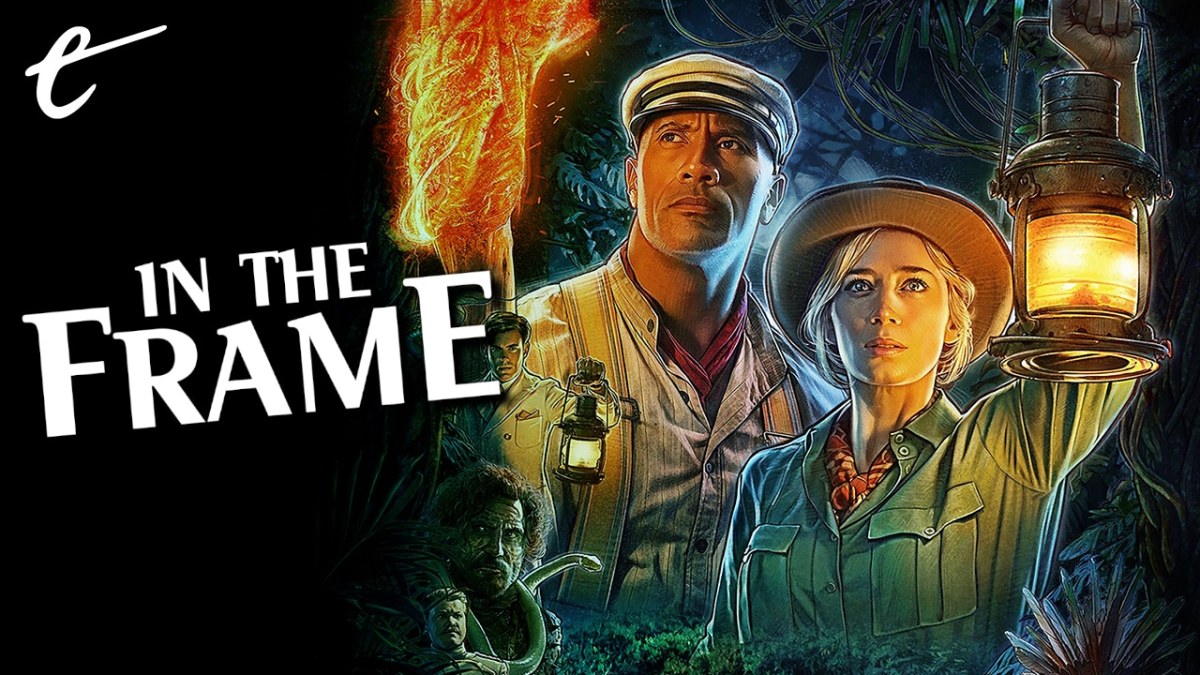Jungle Cruise is obviously based on the eponymous theme park ride. However, the film is consciously designed as a throwback to a particular kind of adventure cinema.
Writers Glenn Ficarra and John Requa drew from the films that inspired the ride. “We found out that Jungle Cruise the ride was itself an adaptation of The African Queen,” explained Requa, referring to the classic riverboat adventure starring Humphrey Bogart and Katharine Hepburn. Dwayne Johnson has cited The African Queen and other movies as points of reference, including the jungle adventure Romancing the Stone and the adaptation of Pirates of the Caribbean: The Curse of the Black Pearl.
Jungle Cruise is an archetypal global adventure narrative. Dr. Lily Houghton (Emily Blunt) is a botanist who has set out in pursuit of the mythical “tree of life” that is supposedly hidden somewhere along the Amazon. To aid her in her quest, she enlists the support of a devilish rogue named Frank Wolff (Johnson), who may be only marginally more reliable than the rusty old boat that he sails. Houghton and Wolff are immediately at odds, but inevitably they warm to one another.
The basic plot of Jungle Cruise evokes all manner of classics. The premise of two unlikely traveling companions embarking on a tropical river journey together suggests The African Queen. A well-educated cosmopolitan woman forced to rely upon an unscrupulous rogue to navigate the perilous jungle recalls Romancing the Stone. The male and female leads racing against a bunch of evil Germans to secure a precious treasure neatly mirrors Raiders of the Lost Ark.

Jungle Cruise strongly evokes Stephen Sommers’ The Mummy, the millennial blockbuster update to those classic adventure films. This is obvious from the opening sequences, where Houghton is introduced by way of slapstick on a ladder in a library. This neatly mirrors the way that The Mummy introduces its female protagonist, Evelyn Carnahan (Rachel Weisz). This feels appropriate, given how important The Mummy Returns would be in launching Johnson’s movie career.
The Mummy is an important touchstone for a number of reasons. Most obviously, it was the first of these adventure films to really embrace computer-generated imagery, particularly motion capture. These sorts of blockbusters had always been driven by special effects, whether matte paintings or model work, but The Mummy proved how much of that sort of adventure could be realized inside a computer. If anything, Jungle Cruise represents an escalation in this direction.
Traditionally, these sorts of adventure movies have been shot on location, in physical spaces that evoke the texture and feel of the environment in which the story unfolds. The African Queen famously shot in the Congo and Uganda. For Raiders of the Lost Ark, Steven Spielberg took the entire production to Tunisia for three months. His friend Robert Zemeckis filmed a large part of Romancing the Stone in the jungles around Veracruz and Hidalgo in Mexico.
This sort of globetrotting was so expected of these films that even the inevitable Cannon Films knock-offs made the effort to add some international flavor. King Solomon’s Mines filmed on location in Zimbabwe. Even more modern and CGI-laden examples of these blockbuster adventure movies have made a point to shoot overseas. The Mummy transformed Marrakech in Morocco into 1920s Cairo. Pirates of the Caribbean: The Curse of the Black Pearl actually shot in the Caribbean.

In contrast, Jungle Cruise shot primarily in Hawaii and Atlanta. Hawaii has been used for other recent blockbusters like Jumanji: Welcome to the Jungle and Jurassic World: Fallen Kingdom. Johnson boasted that the production team had made the island of Kauai home to “one of the most awe inspiring and massive sets ever built from scratch.” However, it is notable that this location work is largely used for the section of the film before the characters embark on their adventure.
The bulk of the Amazonian adventure in Jungle Cruise is realized via computer generated special effects and green screen work. There are quite a few egregious examples, many involving animals or large objects. Wolff has a computer-generated pet tiger. Édgar Ramírez has a supporting role as Aguirre, a zombie conquistador who bleeds computer-generated snakes. A giant secret city sunk beneath the water looks like it was rendered for a high-profile video game.
However, it isn’t just the money shots. Even basic establishing shots of a boat on the river are washed out into muddy browns and faded greens. The version of South America presented in Jungle Cruise looks a lot like that featured in Indiana Jones and the Kingdom of the Crystal Skull — another attempt to update the old adventure movie template for the era of computer-generated spectacle by shooting in Hawaii and using a lot of green screen to make up the difference.
Nothing feels tangible. This is a problem. Jungle Cruise is obviously based on a theme park ride, something inherently uncanny. Philosophers like Umberto Eco and Jean Baudrillard singled out Disneyland as a “hyperreal” environment where the real and the unreal collapsed into one another. As such, it feels bitterly ironic that the actual theme park ride upon which Jungle Cruise is based feels more substantial than the cinematic adaptation. At least on the ride, the unconvincing tiger prop has mass.

Of course, there are reasons why modern films prefer to shoot on computer-generated sets rather than in physical locations. Location work can be frustrating and dangerous. The filming of Apocalypse Now in the Philippines was famously chaotic. Even on Spielberg’s more controlled set for Raiders of the Lost Ark, many members of the cast and crew came down with dysentery. Michael Mann’s Miami Vice was derailed by problems filming in the Dominican Republic, including actual shootings.
More than that, there are reasons to be cynical about corporate decisions to film overseas. One of the reasons that Elaine May got to film the famous box office bomb Ishtar in Morocco was because Coca-Cola owned Columbia Pictures at the time and had frozen assets in the country that it needed to liquify. Paramount only agreed to finance William Friedkin’s Sorcerer if the director chose to shoot in the Dominican Republic, where its then-parent Gulf and Western had substantial holdings.
There is also the possibility of corruption and exploitation. Local businesses would sue Golf and Western during the production of Sorcerer, claiming that the company failed to fulfill its contractual obligations to them. However, these problems don’t just disappear when studios opt to use green screen instead of shooting on location. It has been argued that one of the reasons computer-generated effects are so cost-effective is because of economic exploitation of visual effects studios.

There are perhaps other reasons why modern blockbusters are kept closer to home. From a studio’s perspective, shooting inside a studio in front of green screen makes it much easier to control a director and production. Explaining how he enjoyed so much creative freedom on Thor: Ragnarok, director Taika Waititi joked that the trick to managing Hollywood studio executives was to “make the film in Australia, which is just so far away that they don’t even come down.”
There are more basic reasons to shoot an adventure in a real location. A central appeal of the genre is the ability to transport audiences to another part of the world, to a place far outside their experience, but which does exist. Many of the locations used for films like this do an impressive tourist trade, attracting visitors seduced by what appears on screen. St. Vincent has a Pirates of the Caribbean tour. In 2013, the original African Queen began operating tours up the Ugandan Nile.
In contrast, Jungle Cruise doesn’t take its audience on an adventure to anywhere that exists outside of a computer. The result is more of a simulacrum than the original theme park ride, with its props and animatronics. Jungle Cruise takes its audience up the Amazon and into the uncanny valley.






Published: Jul 30, 2021 11:00 am